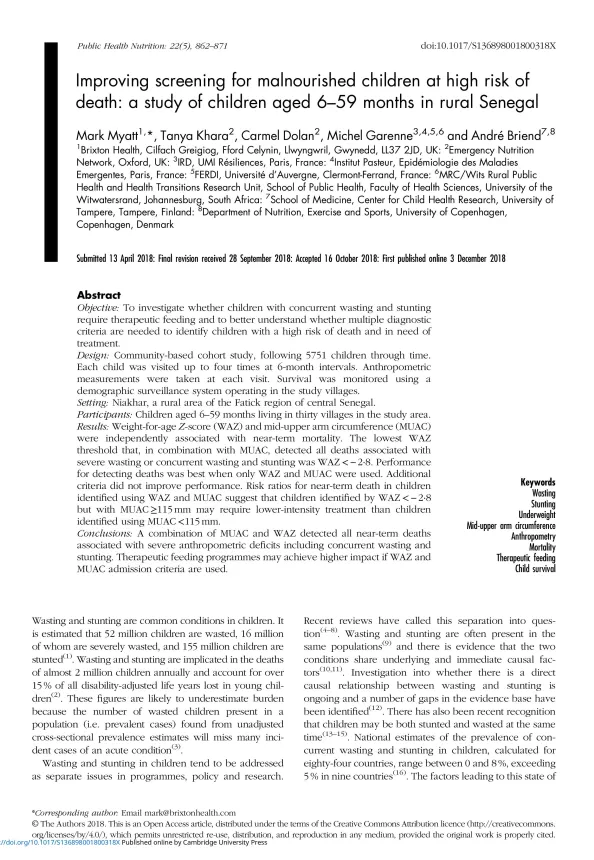Improving screening for malnourished children at high risk of death: a study of children aged 6–59 months in rural Senegal
Publication details
Abstract
Objective: To investigate whether children with concurrent wasting and stunting require therapeutic feeding and to better understand whether multiple diagnostic criteria are needed to identify children with a high risk of death and in need of treatment.
Design: Community-based cohort study, following 5751 children through time. Each child was visited up to four times at 6-month intervals. Anthropometric measurements were taken at each visit. Survival was monitored using a demographic surveillance system operating in the study villages. Setting: Niakhar, a rural area of the Fatick region of central Senegal.
Participants: Children aged 6–59 months living in thirty villages in the study area. Results: Weight-for-age Z-score (WAZ) and mid-upper arm circumference (MUAC) were independently associated with near-term mortality. The lowest WAZ threshold that, in combination with MUAC, detected all deaths associated with severe wasting or concurrent wasting and stunting was WAZ<− 2·8. Performance for detecting deaths was best when only WAZ and MUAC were used. Additional criteria did not improve performance. Risk ratios for near-term death in children identified using WAZ and MUAC suggest that children identified by WAZ<− 2·8 but with MUAC≥115 mm may require lower-intensity treatment than children identified using MUAC<115 mm.
Conclusions: A combination of MUAC and WAZ detected all near-term deaths associated with severe anthropometric deficits including concurrent wasting and stunting. Therapeutic feeding programmes may achieve higher impact if WAZ and MUAC admission criteria are used.

Cite this publication
Reference this page
Myatt M, Khara T, Dolan C, Garenne M, Briend A. Improving screening for malnourished children at high risk of death: a study of children aged 6–59 months in rural Senegal. Public Health Nutrition. 2019;22(5):862-871. doi:10.1017/S136898001800318X